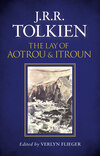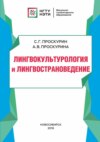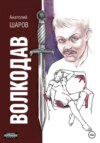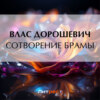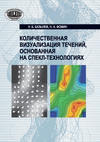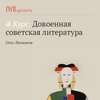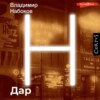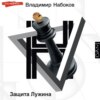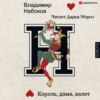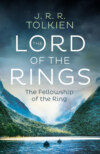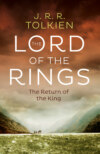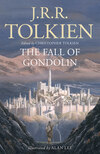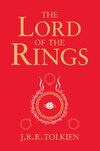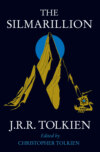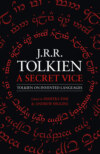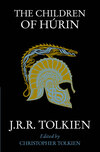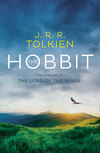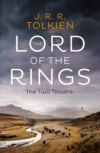Buch lesen: «The Lay of Aotrou and Itroun»

‘Aotrou & Itroun’ first folio of the manuscript.

Copyright
Published by HarperCollinsPublishers Ltd
1 London Bridge Street
London SE1 9GF
First published in Great Britain by HarperCollinsPublishers 2016
All texts and materials by J.R.R. Tolkien © The Tolkien Trust 1945, 2019
Note on the Text © Christopher Tolkien 2019
Introduction, Notes and Commentary © Verlyn Flieger 2019
 ® and ‘Tolkien’® are registered trade marks of The Tolkien Estate Limited
® and ‘Tolkien’® are registered trade marks of The Tolkien Estate Limited
The Proprietor on behalf of the Author and the Editors hereby asserts their respective moral rights to be identified as the authors of the Work.
All manuscript and typescript pages reproduced courtesy of the Tolkien Trust.
A CIP catalogue record for this book is available from the British Library
All rights reserved under International and Pan-American Copyright Conventions. By payment of the required fees, you have been granted the non-exclusive, non-transferable right to access and read the text of this e-book on screen. No part of this text may be reproduced, transmitted, down-loaded, decompiled, reverse engineered, or stored in or introduced into any information storage and retrieval system, in any form or by any means, whether electronic or mechanical, now known or hereinafter invented, without the express written permission of HarperCollins.
Source ISBN: 9780008202156
Ebook Edition © November 2016 ISBN: 9780008202149
Version: 2019-05-01
Epigraph
‘The fear of the beautiful fay that ran through the elder ages almost eludes our grasp.’
J.R.R. Tolkien ‘On Fairy-stories’
Contents
COVER
TITLE PAGE
COPYRIGHT
EPIGRAPH
LIST OF PLATES
NOTE ON THE TEXT
INTRODUCTION
PART ONE: THE LAY OF AOTROU AND ITROUN
The Lay of Aotrou and Itroun
Notes and Commentary
PART TWO: THE CORRIGAN POEMS
Introduction
‘The Corrigan’ I
Notes and Commentary
‘The Corrigan’ II
Notes and Commentary
PART THREE: THE FRAGMENT, MANUSCRIPT DRAFTS AND TYPESCRIPT
The Fragment
The Manuscript Drafts
Aotrou & Itroun fair copy manuscript
Notes and Commentary
The Typescript
Commentary
PART FOUR: COMPARATIVE VERSES
Comparative Verses
Opening verses: Breton, French, English; Tolkien
Closing verses: Breton, French, English; Tolkien
FOOTNOTES
WORKS CITED
ACKNOWLEDGEMENTS
WORKS BY J.R.R. TOLKIEN
ABOUT THE PUBLISHER
PLATES
| ‘Aotrou & Itroun’ first folio of the manuscript | frontispiece |
1. ‘The Corrigan’ I, first folio of the manuscript.
2. ‘The Corrigan’ II, first folio of the manuscript.
3. The fragment.
4. ‘Aotrou & Itroun’, first folio of the manuscript.
5. ‘Aotrou & Itroun’, first page of the typescript.
NOTE ON THE TEXT
The Lay of Aotrou and Itroun was once previously printed, in The Welsh Review, Vol. IV, no. 4, December 1945. There are three texts of the poem extant (but no original workings). The first is a good but incomplete manuscript that was apparently overtaken by the second text (very little changed from the first), a fine fair copy on which my father wrote at the end a date: Sept. 23 1930. This is notable, for dates on the fair copy manuscript of The Lay of Leithian run consecutively for a week from September 25, 1930 (against line 3220), while the previous date on the manuscript is November 1929 (against line 3031, apparently referring forwards). Clearly then Aotrou and Itroun interrupted the composition of Canto X of The Lay of Leithian.
The third text is a typescript of the manuscript, incorporating a relatively small number of corrections that had been made to it; this typescript is closely similar to that of The Lay of Leithian, and certainly belongs to this time. Both use the same mode of typing direct speech in italic. Subsequently the typescript was heavily revised, with more than a quarter of the original lines undergoing minor change or complete rewriting: but none of these revisions alter the narrative. My father visited Aberystwyth as an examiner in June 1945 and left with his friend Professor Gwyn Jones several unpublished works, Aotrou and Itroun, The Homecoming of Beorhtnoth, and Sellic Spell. This led to the publication of Aotrou and Itroun in The Welsh Review, of which Gwyn Jones was the editor, at the end of that year, at the editor’s request.
There are a few discrepancies between the text printed in The Welsh Review and the typescript which I feel sure was its basis. Nearly all of these are insignificant points of punctuation and spacing. The title in the typescript is Aotrou and Itroun (‘Lord and Lady’). A ‘Breton Lay.’
It is to be noted that it is incorrect to say that Aotrou and Itroun ‘is in alliterative verse, and also incorporates a rhymescheme’ (Humphrey Carpenter, Biography, p. 168). The poem is in octosyllabic couplets, in style closely related to The Lay of Leithian, and alliteration is decorative, not in any way structural, though here and there it becomes very marked:
In the homeless hills was her hollow dale,
black was its bowl, its brink was pale;
there silent on a seat of stone …1
But the Lay of Aotrou and Itroun has a longer history, being in fact a development from the second part of a composite poem called The Corrigan (a Breton word meaning ‘fairy’), which is also given here. There is no evidence for the date of The Corrigan, though it seems unlikely that any long interval separated it from Aotrou and Itroun.
A pencilled note to the first part of this poem says that it was ‘suggested by “Ar Bugel Laec’hiet”, a lay of Cornuaille’ (in Brittany). The metre of the second part, though distinct from that adopted for Aotrou and Itroun, is not so distinct that lines from it could not be taken up into the second work (and in fact there are more such in the earlier versions of Aotrou and Itroun, rejected in the final revision); but the tale is told in a different manner, and contains no suggestion of the essential element in Aotrou and Itroun that the lord was childless, that he went to a witch to obtain her aid, and that she was the fairy of the fountain.
CHRISTOPHER TOLKIEN
INTRODUCTION
Coming from the darker side of J.R.R. Tolkien’s imagination, The Lay of Aotrou and Itroun, as well as the two shorter poems that precede and lead up to it, are important additions to the non-Middle-earth portions of his canon and should be set alongside his other retellings of existing myth and legend, The Legend of Sigurd and Gudrún, The Fall of Arthur and The Story of Kullervo. While Tolkien’s title makes no reference to the ‘beautiful fay’ that is the epigraph for this volume – focusing instead on the Lord (‘Aotrou’) and Lady (‘Itroun’) who are her victims – the character plays a part in several of Tolkien’s poems in his middle years. In addition to the Lay, she appears in ‘Ides Ælfscýne’ (Elf-bright Lady), one of his contributions to the Songs For The Philologists, a collection privately printed in 1936. Here an elf-maiden beguiles a mortal man into fairyland; when he returns fifty years later, all his friends are dead. Although Tolkien’s poem is in Old English, the character is a commonly recurring one in Celtic folklore, the seductive otherworld female who lures a mortal man.
In the Lay she represents a particular subset of this type, a continental Celtic female fairy called a corrigan, malevolent, sometimes seductive, whose dangerous attraction embodies both the lure and terror, the ‘fear of the beautiful fay’ of my epigraph. The corrigan figures prominently in all the poems in the present volume, moving from behind the scenes in the first poem, ‘The Corrigan’ I, based on a Breton ballad, to take centre stage in ‘The Corrigan’ II, derived from a Breton lay. She becomes an increasingly ominous presence in the two longer versions that Tolkien developed out of ‘The Corrigan’ II. The sequence charts her increasingly powerful presence as, poem by poem, she takes an ever more active role in the lives of human beings. And finally she foreshadows the greatest and best-known of Tolkien’s magical, mysterious ladies of the forest, one also linked to a fountain and a phial: the beautiful and terrible Lady of the Golden Wood, Tolkien’s Elven Queen, Galadriel, of The Lord of the Rings.
All the poems in this volume are the products of a comparatively short but intense period in Tolkien’s life when he was deeply engaged with Celtic languages and mythologies. All the poems derive to a greater or lesser degree from a single source: Theodore Claude Henri Hersart de la Villemarqué’s dual-language (Breton and French) folklore collection, Barzaz-Breiz: Chants Populaire de la Bretagne, first published in 1839 and reprinted in 1840, 1845, 1846, and 1857. Villemarqué’s work was a part of the nineteenth-century folklore movement in Europe and the British Isles, a last-minute effort to capture and preserve the indigenous folk and fairy tales and ballads that were even then rapidly disappearing. What the Grimms’ Kinder- und Hausmärchen did for Germany, the Child collection of English and Scottish Popular Ballads and Percy’s Reliques of Ancient Poetry did for Britain, and Elias Lönnrot’s Kalevala did for Finland, Villemarqué intended Barzaz-Breiz to do for Brittany (and, it might be added, Tolkien wanted his ‘Silmarillion’ legendarium to do, imaginatively, for England). This was to recover (or, in Tolkien’s case, supply) a folk tradition that would contribute to and validate a cultural identity. Particularly in the cases of the Grimms and Lönnrot the underlying effort was not just to preserve the stories but to discover their lore, and especially their language, the often archaic regional vocabulary or dialect containing the remains of a lost or submerged mythology and worldview, the roots of a native culture.
So it was with Villemarqué. Although Brittany had been a part of France since 1532, it was the Breton identity celtique of the anciens bardes, as well as the Breton language, that he sought to preserve, and so he was careful to note the regional sources and indigenous dialects for his material, chiefly Léon, Cornouaille, and Tréguier. Immensely popular when it was first published, the Chants Populaire was immediately translated into German, Italian, and Polish. An English translation by Tom Taylor was published in 1865 as Ballads and Songs of Brittany. Villemarqué was later accused, as were Lönnrot and the Grimms, of tampering with the originals, of ‘improving’ on the sources. Although the accusations are to some extent true, the underlying myth and folklore elements are authentic, and such accusations have not markedly reduced the popularity of the works in question. Barzaz-Breiz has been continuously in print since it first appeared.
Tolkien owned the 1846 two-volume edition, and his signature, John Reuel Tolkien, and the date of purchase, 1922, are written on the flyleaf of each volume. They are listed in a catalogue of his books now held in the English Faculty Library in Oxford, which shows over a hundred entries for Celtic books, histories, grammars, glosses, and dictionaries, as well as primary mythological texts. Many of these, like the Villemarqué, were purchased in the early 1920s. Tolkien was also in this period working on the stories of his own mythology, so it is not surprising that one activity should influence the other, the Celtic content of his studies affecting the form and subject matter of his creative work. Among other efforts, he was at work on The Lay of Leithian, a long poem in rhymed octosyllabic couplets that tells the great love story of Beren and Lúthien, a story whose textual history has been edited and published by Christopher Tolkien in The Lays of Beleriand.
Christopher’s Note on the Text of Aotrou and Itroun (see here) cites the ‘fair copy’ on which, as he writes, ‘my father wrote at the end a date: Sept. 23, 1930. This is notable,’ Christopher continues, ‘for dates on the fair copy manuscript of The Lay of Leithian run consecutively for a week from September 25, 1930 (against line 3220), while the previous date on the manuscript is November 1929 (against line 3031, apparently referring forwards).2 Clearly then Aotrou and Itroun intersected the composition of Canto X of The Lay of Leithian.’
No beginning date for Aotrou and Itroun has come to light, but the cluster of dates cited in Christopher’s Note – November 1929 against line 3031 of The Lay of Leithian, Sept. 23 marking the end of the fair copy of Aotrou and Itroun, and Sep. 25 against line 3220 for resumption of work on The Lay of Leithian – support his conclusion that in November of 1929 Tolkien interrupted his copying of Canto X of The Lay of Leithian for almost a year, and that the product of that interruption was Aotrou and Itroun, perhaps even the entire ‘Breton’ sequence beginning with ‘The Corrigan’ I.
Because all the poems included here interconnect and overlap in their treatment of shared material, it has seemed best for clarity to separate them into shorter sections, each poem followed by notes and commentary. Part I contains the title-poem originally published in The Welsh Review. Part II introduces the two (presumably) preliminary poems leading up to it, which Christopher Tolkien has treated together as a composite, since they are conjoined by title. These are ‘The Corrigan’ I, a story of a changeling, and ‘The Corrigan’ II, subtitled ‘A Breton Lay – after “Aotrou Nann Hag ar Gorrigan” a lay of Leon’. ‘The Corrigan’ II follows closely the Breton source, but is missing the elements mentioned by Christopher, the couple’s childlessness, the Lord’s first visit to the witch, and that she is the fairy of the fountain. Part III includes a transcription of the fair manuscript which adds those elements, and facsimile pages from the emended typescript which was the base text for the finished poem published in The Welsh Review. Part IV compares Tolkien’s poems with verses from the original Breton text and its contemporary French and English translations.
Der kostenlose Auszug ist beendet.

